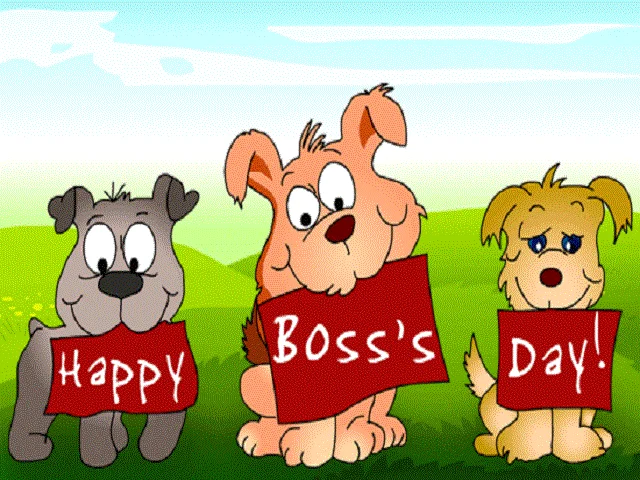Every October 16th, a peculiar and inefficient ritual plays out in American offices. It’s called National Boss's Day, an event ostensibly designed to foster goodwill between management and labor. The stated purpose, according to its 1958 registration with the U.S. Chamber of Commerce, is to honor bosses for their leadership and for "keeping others gainfully employed."
On the surface, the logic seems simple enough. Suggested activities include signed cards, team videos, or perhaps an office breakfast. Yet, the entire construct rests on a fundamentally unstable premise: a mandated, upward flow of appreciation within a hierarchical power structure. This isn't a celebration between equals; it's a performance requested of subordinates for the benefit of their superiors. And when you start to look at the data, the whole system reveals itself not as a tool for morale, but as a source of significant, unquantifiable risk.
The core of the problem is an information asymmetry coupled with a power imbalance. What is the expected return on investment for a personalized mug or a shareable lunch? The question itself is absurd, yet employees are forced to calculate it.
The Appreciation Paradox
The central tension of Boss's Day is what psychologist Paul White identifies as a "damned if you do and damned if you don't" scenario. This isn't just a turn of phrase; it's the description of a flawed behavioral model that highlights The challenges of showing appreciation on Boss’ Day. For an employee, the decision matrix is a mess. Action (giving a gift) can be interpreted as ingratiation. Inaction can be interpreted as insubordination or a lack of team spirit. The manager, the sole arbiter of this interaction, may feel slighted by silence or suspicious of praise.
This is like trying to calibrate a highly sensitive instrument with a sledgehammer. The intended output is "appreciation," a notoriously difficult metric to quantify. We have survey data indicating that 43% of employees report that feeling appreciated fosters confidence. But this is a classic correlation-causation fallacy. Does a mandatory holiday generate genuine appreciation, or does it simply create a temporary spike in performative gestures that ultimately degrades the value of authentic recognition? What is the half-life of the goodwill generated by a store-bought card?

I've looked at hundreds of these corporate engagement surveys, and this is the part of the report that I find genuinely puzzling: the assumption that appreciation is a commodity that can be scheduled. True appreciation is an output of a well-functioning system—fair compensation, clear goals, and competent leadership—not an input you can inject on a specific calendar day. Forcing the issue through a holiday creates social and political noise that obscures the real signal of a healthy manager-employee relationship. The risk of miscalculation is high, and the potential reward is negligible.
A Systemic Leadership Failure
The origin story of this holiday, often recounted in articles like Happy National Boss's Day 2025: Wishes, inspiring quotes, and the history behind the celebration, is in itself telling. It was created in 1958 by Patricia Bays Haroski, a secretary for State Farm, to honor her father, who also happened to be her boss. It was a personal, specific gesture. The error was scaling it. A gesture born of a unique, familial relationship was abstracted and applied to the entire national workforce, regardless of context. The system wasn't designed for that.
This points to a much larger discrepancy in the corporate landscape. A recent survey indicates that a staggering 86% of companies report that developing new leadership is an urgent need. Think about that. The vast majority of organizations are openly admitting they have a leadership deficit. And yet, we perpetuate a holiday that puts the onus on employees to celebrate the very management class that is, by the numbers, underperforming.
A significant number of employees—to be more exact, 67%—prefer to work for a company whose mission they believe in. This suggests that loyalty and motivation are driven by alignment with organizational purpose, a purpose that a good leader is supposed to embody and communicate. A boss who successfully does this doesn't need a designated day of tribute. Their "appreciation" is measured in retention, productivity, and the team's ability to execute on the stated mission.
Imagine the quiet tension in an office as a card is passed around. The low hum of the servers in the background, the almost-silent scratch of a pen as another employee signs their name below a generic, pre-printed sentiment. It’s a transaction, but the currency is ambiguous and the value is debatable. The day was officially proclaimed a holiday in Illinois in 1963 (a full five years after its creation), institutionalizing this awkwardness. Is this annual performance of gratitude papering over the cracks of that 86% leadership deficit? Or is it making the cracks even wider?
A Flawed Behavioral Metric
Ultimately, National Boss's Day is an inefficient, high-noise, low-signal social construct. It attempts to solve a complex human capital problem—morale and recognition—with the bluntest instrument imaginable. It introduces behavioral risk without offering any quantifiable upside, forcing employees to navigate a minefield of unwritten rules and potential misinterpretations. The data clearly shows that what employees truly value is mission alignment and what companies desperately need is better leadership. This holiday addresses neither. It’s a rounding error in the calculus of good management, a legacy system that generates more anxiety than appreciation. It’s bad data, plain and simple.
